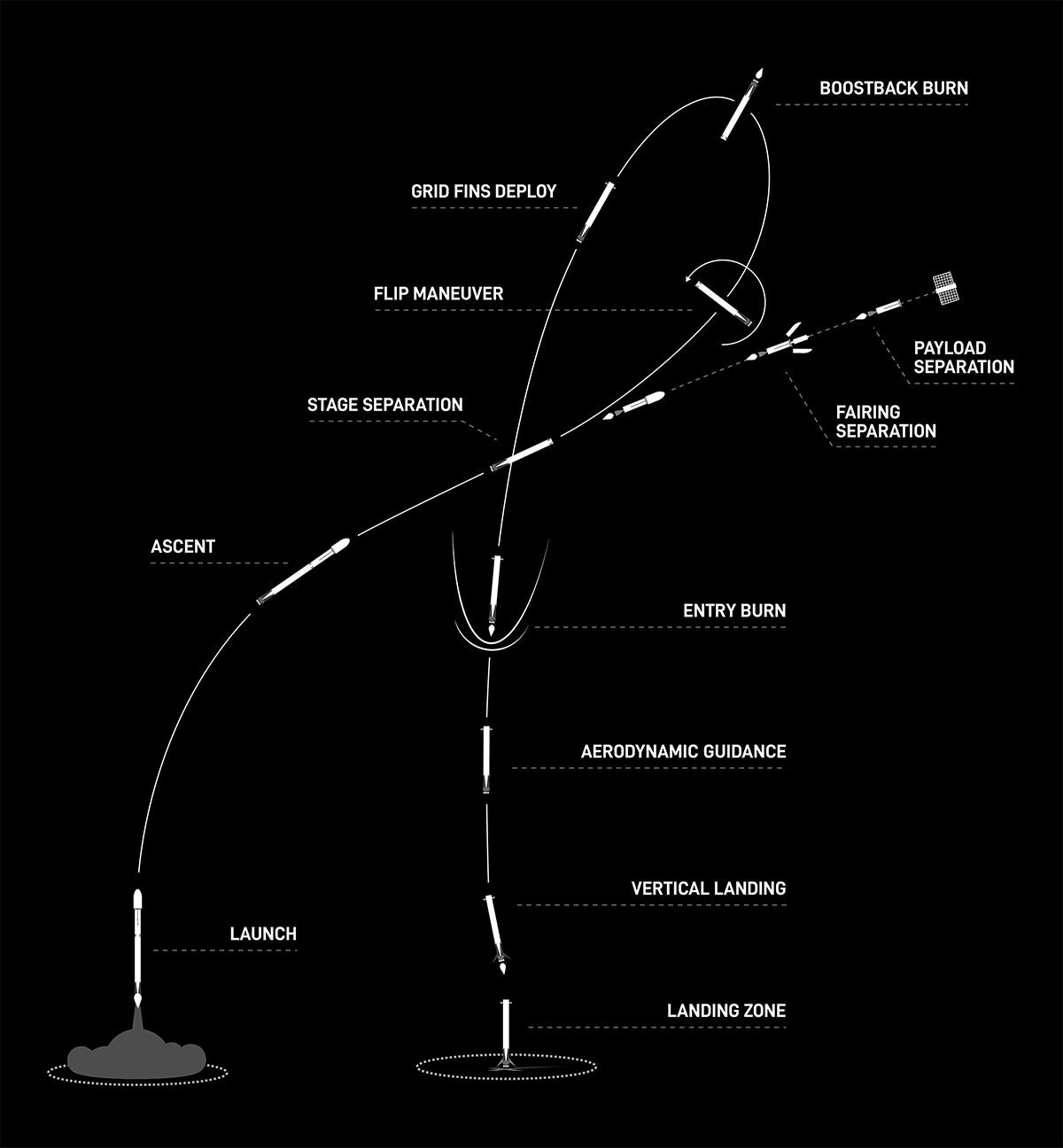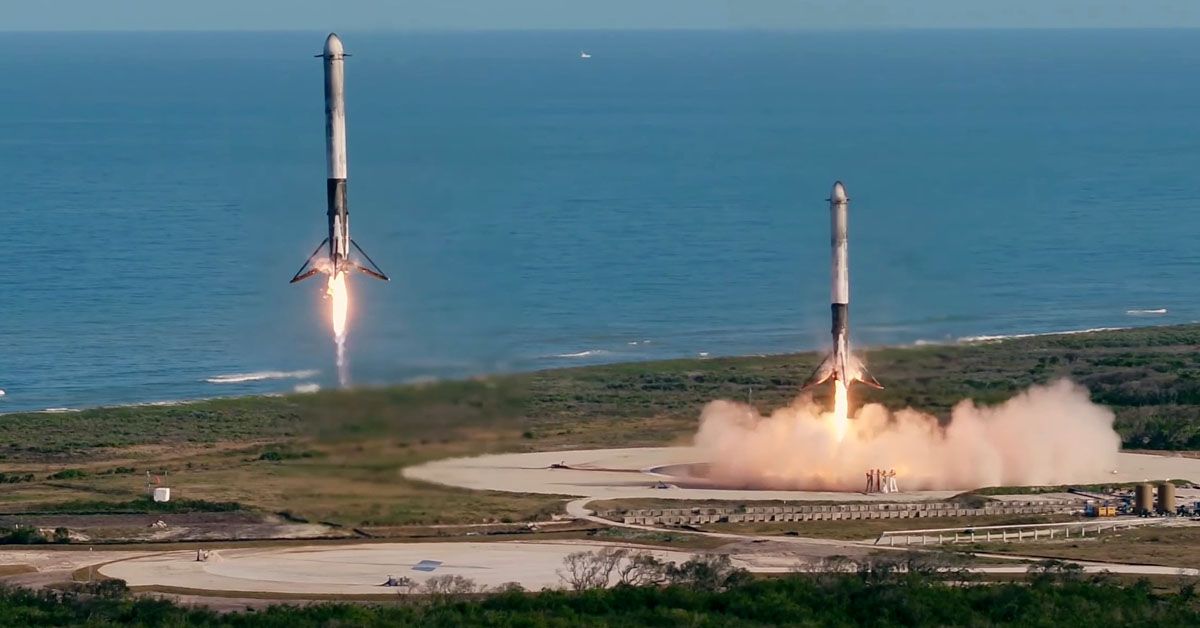Imagine a soaring rocket launching into the blue sky, the smoke trailing behind, the roar of engines echoing in your ears. You'd think that's the end of its journey, right? Well, not for SpaceX's Falcon 9 rocket.
SpaceX's Falcon 9 Block 5 rockets are making big waves in the world of space exploration. They're super special because they can land back on Earth after their mission, and they do this 97% of the time, which is really amazing!
What's even more cool is that they do this more often than many other rockets can even launch successfully.
But how does this fascinating process work?
Understanding the Falcon 9 Rocket
The Falcon 9 rocket is a marvel of modern engineering. Picture this, a tube made of aluminum-lithium alloy, standing as tall as a 14-story building! That's right, the Falcon 9 rocket comprises this robust material.
The choice of material is important because it's strong enough to withstand the extreme conditions of space travel while being lightweight to improve the rocket's efficiency.
Now, let's talk about the intriguing part of the Falcon 9's journey: its return to Earth. It's not a gentle glide down, but a daring vertical descent.
Imagine dropping a pencil straight down, tip-first. That's how the Falcon 9 descends, but with a twist - it's on fire!
Here's my shot of the @SpaceX Falcon 9 entry burn after carrying @OneWeb to orbit. Shot was from about 30 miles south of landing site with a Nikon P1000. pic.twitter.com/xA2eBvXDEn
— DrWD40 (@DrWd40) December 8, 2022
This fiery nature isn't just for show, it's an essential part of the process. When the rocket re-enters Earth's atmosphere, the friction causes it to heat up and produce flames.
And why does it descend vertically? This helps it land precisely back on its landing pad, just like a helicopter.
But why is this vertical and fiery descent so important? Because it's not just about sending rockets to space, it's also about bringing them back safely.
This way, SpaceX can reuse the rockets, saving money and resources. It's a challenging task, but that's what makes it so fascinating.
How do they manage to land a fiery, 14-story rocket vertically back on Earth? Stick around as we dive into the six-step process next!
The Six Steps in the Landing Process of a Falcon 9 Rocket
1. Stage Separation
Imagine a Falcon 9 rocket just launched, starting its journey through the vastness of space. The first major move to get the rocket back to Earth is the 'Stage Separation.'
This is where the first part of the rocket, which we call the first stage and is responsible for the initial lift-off, parts ways with the second stage. The second stage carries on with the mission's payload further into space.
The separation takes place when the rocket is at least 50 miles high, though it could be higher depending on what the mission requires.
2. The Boostback Burn
Once the first stage separates, it's time for the 'Boostback Burn.' Before the burn kicks off, cold gas thrusters orient the rocket "engine first." Then, the boost backburn begins canceling out most of its horizontal speed.
This important phase involves reigniting three out of the rocket's nine engines to guide it back toward the landing area, moving at an impressive speed of around 3,000 miles per hour!
Four years ago today, Falcon 9 landed on the Of Course I Still Love You droneship for the first time. Additional Falcon landings footage → https://t.co/rfdp4gOYol pic.twitter.com/5y8DSJ2JtD
— SpaceX (@SpaceX) April 8, 2020
However, if the Falcon 9 isn't returning to a landing zone and is instead landing on a drone ship, this step isn't needed.
3. Coasting and Reorientation
Following the Boostback Burn, the first stage enters a 'Coasting' phase. Here, the rocket takes a brief pause, gliding back to the landing zone. Behind the scenes, cold gas thrusters flip the rocket "tail down" during this phase.

This flip prepares the rocket for its return trip, putting it in the correct orientation for its descent. During this phase, the rocket also deploys its grid fins, which are crucial when it reaches the denser part of the atmosphere.
4. The Supersonic Retropulsion Burn (Entry Burn)
Next up is the 'Supersonic Retropulsion Burn,' also known as the Entry Burn. This phase is critical for slowing the rocket down, as it's still moving at supersonic speeds.
It starts with the ignition of the same three engines used in the boost backburn, slowing the rocket down to approximately 560 miles per hour by the end of this phase.
As mentioned earlier, the grid fins are already deployed and working hard, controlling the booster in the denser part of the atmosphere and reducing its speed.
5. The Final Burn and Landing Preparation
As the Falcon 9 nears Earth, it enters 'The Landing Burn,' also known as the 'Suicide Burn.' This phase brings the rocket's speed down even further, to roughly 5 miles per hour.
Tracking footage of Falcon 9 first stage returning to Earth after launching the Ax-2 mission to orbit pic.twitter.com/fLPQ7OhJOg
— SpaceX (@SpaceX) June 3, 2023
During this phase, the rocket's landing gear comes into action. Legs made of carbon fiber and aluminum unfold from the base of the rocket, adding crucial stability for the upcoming touchdown.
6. Landing
The last step of the process is the 'Landing.' The Falcon 9 first stage touches down on a drone ship in the ocean or a landing site on solid ground, depending on the specific mission. Once it lands, engineers make sure the rocket is secure and stable.
And believe it or not, the entire process from launch to landing takes only about nine minutes!












